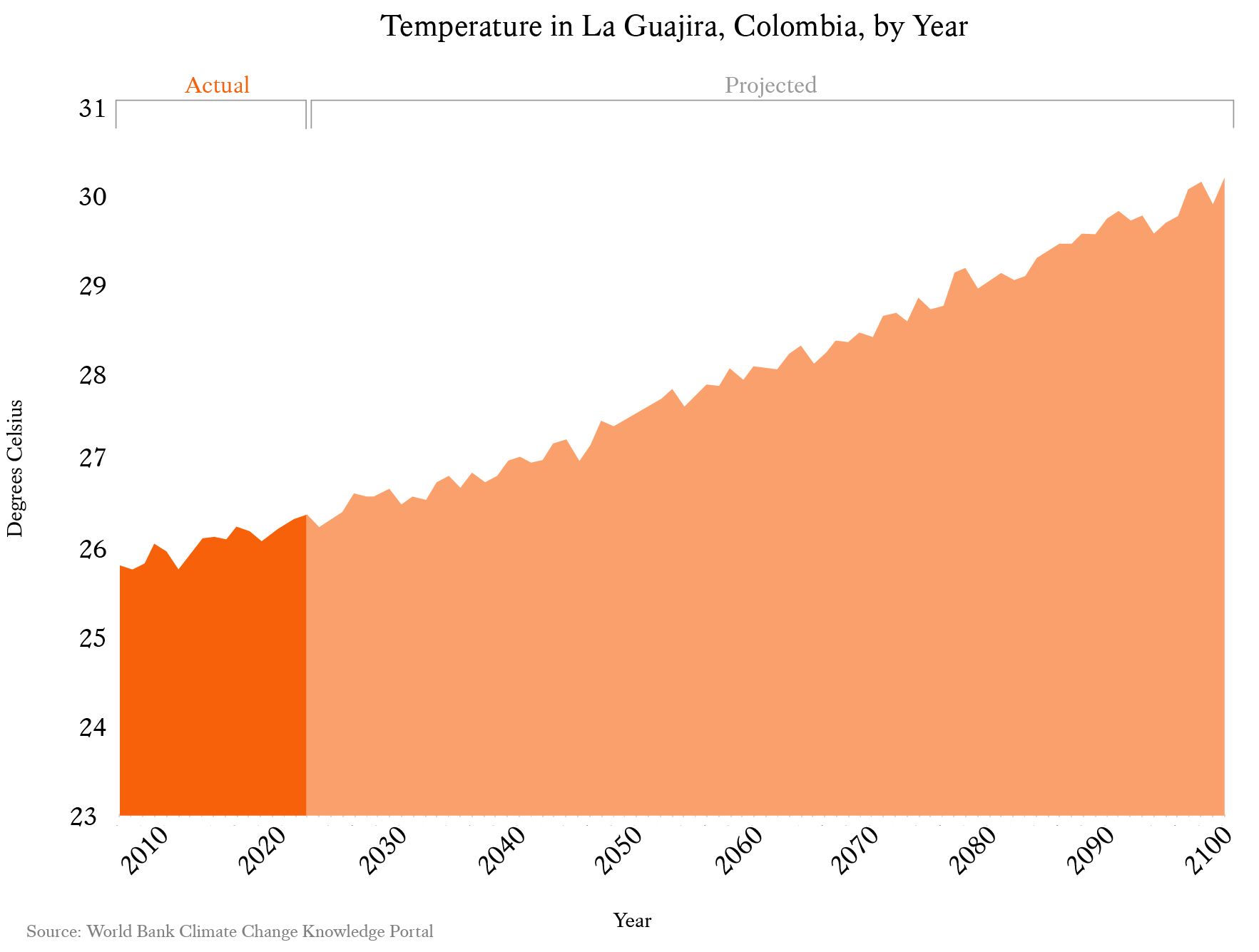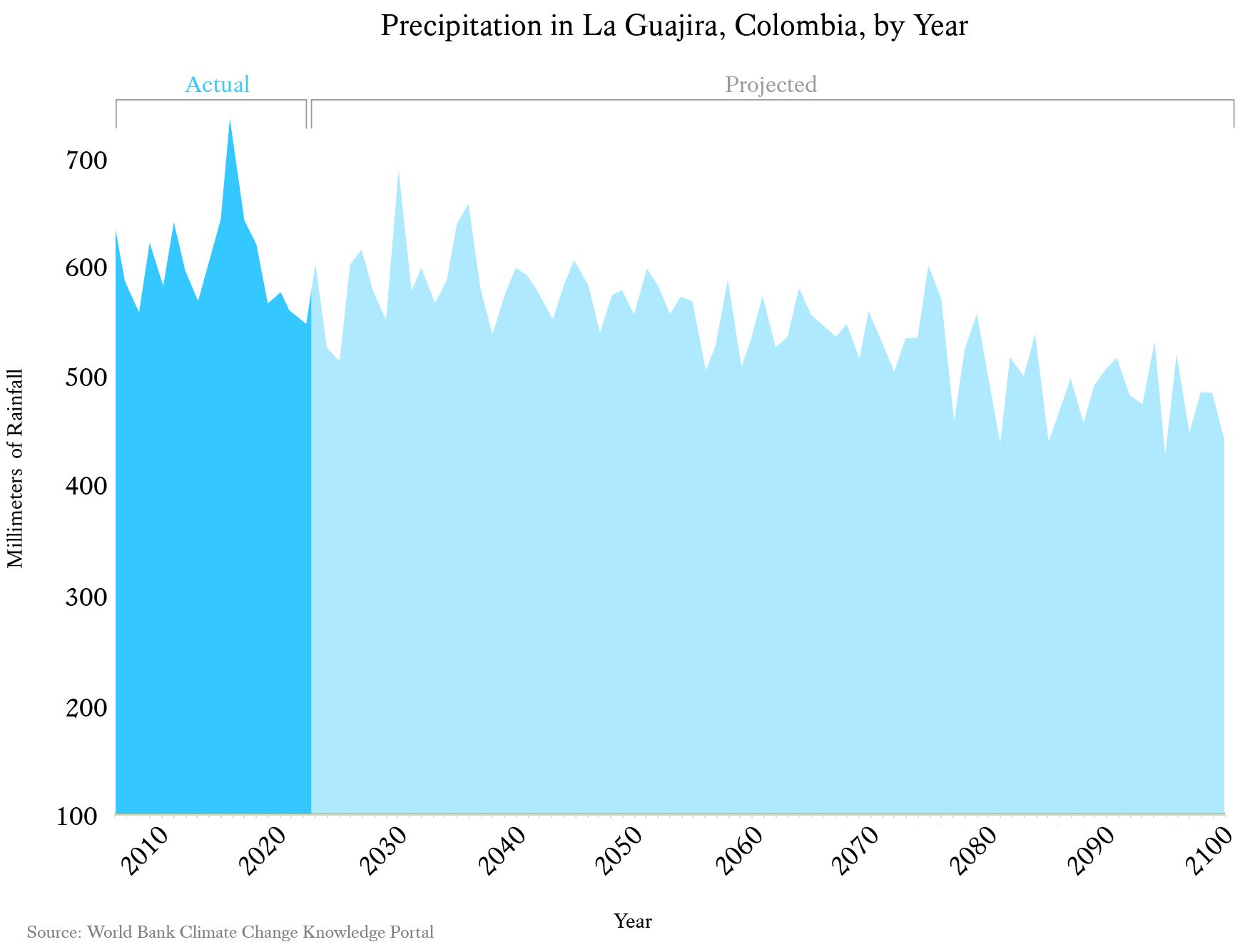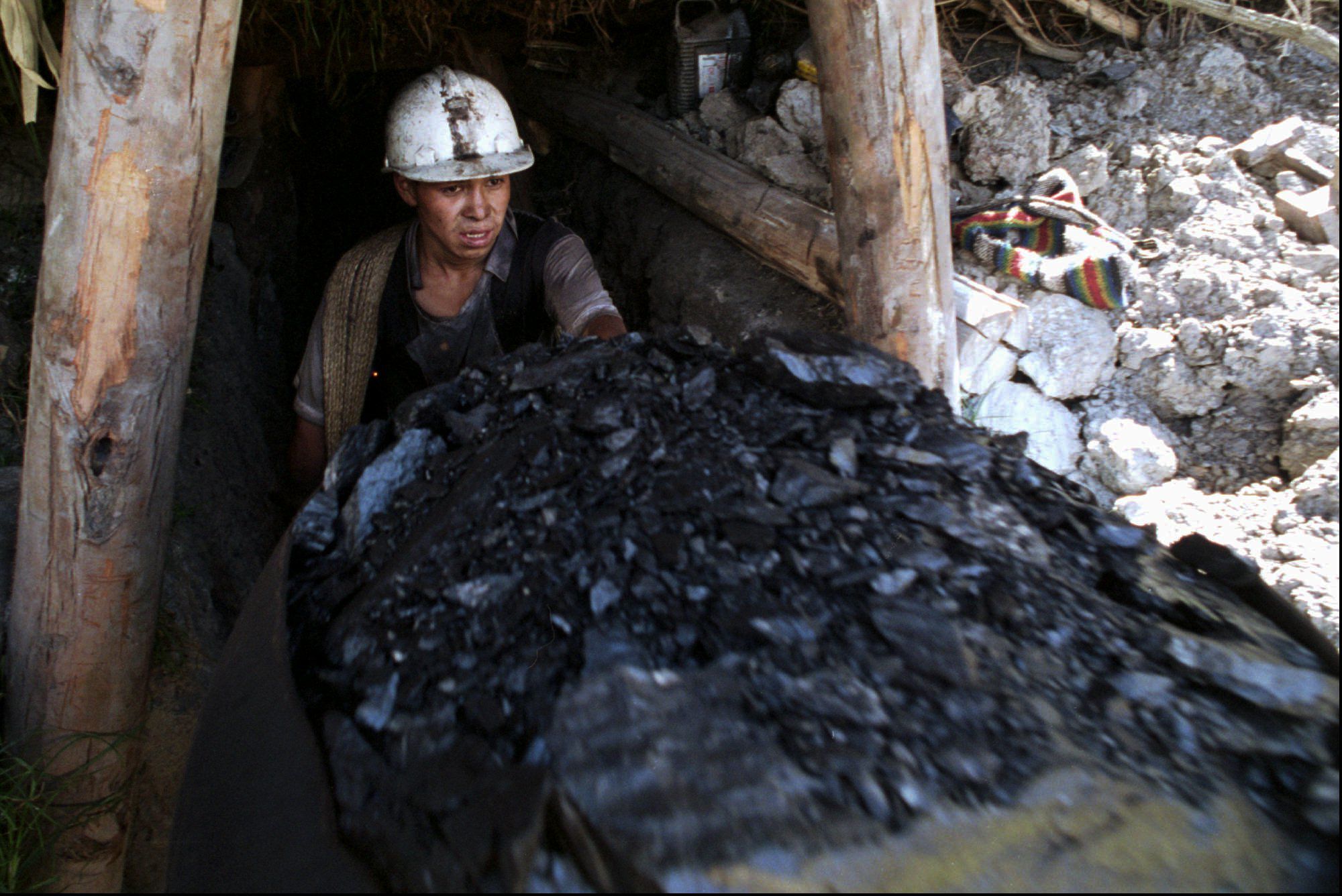From Blue to Green: Transforming Jobs Around the World
Chapter 6: Meet Sandra & Colombia

If you follow a line drawn southeast from Pittsburgh through the Americas to the region of La Guajira in Colombia, you find a place poised for a transition to green jobs, a shift in some ways similar to what Pittsburgh, once known as the Steel City, has experienced.
“Green jobs are a result of realities," says Sandra Garavito, of the U.S. Agency for International Development (USAID). She prepares young professionals in La Guajira to apply for renewable energy sector jobs opening up throughout Colombia.
The realities to which Garavito refers are threats to Colombia’s traditional energy supply.
Meet Sandra Garavito from Bogotá, Colombia.
Meet Sandra Garavito from Bogotá, Colombia.
Colombia relies on hydropower — using rivers’ currents to generate electricity. Today, the country’s electricity use comprises 72% hydropower. But after decades of status quo, frequent droughts are lowering river levels and making hydropower less reliable.
The United Nations Development Program (UNDP) estimates that Colombia is at high risk of harm from climate change. By 2070, the annual temperature could increase between 2 and 4 degrees Celsius in Colombia, and annual rainfall could drop by 30% in some regions there, UNDP says.

(State Department)
(State Department)

(State Department)
(State Department)
Less rainfall would mean less water to fuel hydropower plants and an increased need for other forms of energy. Ironically, it could increase coal mining in La Guajira, adding to the pollution that causes climate change. (During recent droughts, Colombia has relied on burning fossil fuels.)
But the good news is that La Guajira is home to multiple ecosystems, from coastal beaches to rugged, arid desert, where wind and solar energies can flourish.

Coming up next:
Chapter 7: La Guajira — A Region Divided
Colombia reckons with the impact of the coal industry and embarks on an effort to train a whole new generation to work in renewable energy. Read Chapter 7: La Guajira — A Region Divided.

Reaching global net-zero represents the greatest economic opportunity of our time but no country can solve the climate crisis alone. Be a part of the bold action needed to tackle the climate crisis for future generations.
